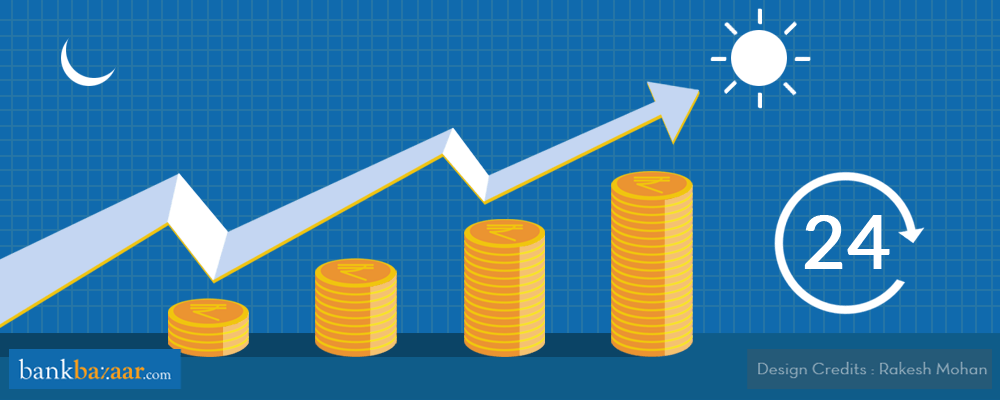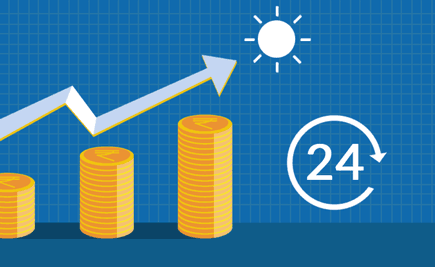Mutual Fund houses have started offering schemes that allow investment through SIPs on a daily basis. So, what are daily SIPs? We’ll tell you about it here.

Mutual Fund houses are devising novel ways to incentivise investments in the equity market. Recently, Mutual Fund houses like LIC Mutual Fund and HDFC Securities launched daily SIP plans. Take the case of HDFC Securities that allow customers to start daily SIP with a minimum amount of Rs. 500. LIC Mutual Fund, on the other hand, is offering an option to invest in an SIP with as little as Rs. 300 per day.
HDFC Securities launched the ‘daily SIP’ in partnership with BSE in January 2018. LIC Mutual Fund, on the other hand, initially started the service with five equity schemes which include LIC MF Equity Fund, LIC MF Growth Fund, LIC MF Midcap Fund, LIC MF Infrastructure Fund and LIC MF Index Fund and two hybrid schemes viz. LIC MF Balanced Fund and LIC MF Monthly Income Plan.
Additional Reading: Is SIP In Debt Fund A Good Idea?
Daily SIPs are ideal for those who have a daily income flow and want to park some of their daily earnings in a fund that shows the possibility of offering healthy returns over the course of a few years. Individuals who earn daily cash have a tendency to park a portion of this with unorganised private financiers.
Let’s find out more about daily SIPs but let’s understand what a SIP is first.
What is an SIP?
An SIP or Systematic Investment Plan is a methodical way to invest a fixed sum at regular intervals in a Mutual Fund, typically equity Mutual Fund schemes. It helps investors to steer clear of timing the market and average the cost of purchase of Mutual Fund units over a long period.
For example, an investor who has opted for a monthly SIP will be buying Mutual Fund units on a certain date every month at different prices. So, when the markets are doing well, the investor will get fewer units and when the market is cheap, the investor will get more Mutual Fund units. In the long run, therefore, the overall cost of buying Mutual Fund units will average out.
The sooner you start investing, the better. Here’s an example. Assuming an annual rate of return of 12%, an individual who is 30 years old needs to invest Rs. 2,860 per month to reach a corpus of Rs. 1 crore at the age of 60. But, if he starts at the age of 40, he/she will need to invest Rs. 10,100 per month to reach the same corpus at the age of 60.
Additional Reading: 4 Reasons Why You Should Adopt The SIP Route When Investing
What impact does it have on your returns?
Financial experts opine that there shouldn’t be any need for daily SIPs over the long term. In the short term though, these kinds of plans can tide over market volatility. Generally, SIPs are meant to be long-term instruments and therefore, if one considers three, five years, and so on, there won’t be any significant difference in terms of returns between a daily SIP and a monthly SIP.
The daily SIP option will increase the number of transactions from one per month for a monthly SIP mode to more than 20 transactions a month for the daily SIP option. This after a couple of years will become unmanageable and cumbersome.
Experts believe that if the market volatility is not very high in a month, the daily SIP option will result in very little rupee cost averaging which will defeat the purpose of SIPs.
While there is no conclusive research to show that daily SIPs offer better returns than their monthly counterparts, your decision to opt for either will depend upon your investment goals, risk appetite, and cash inflows.
Additional Reading: Daily vs Monthly SIP: Who’s The Winner?
Either way, investing in equity Mutual Funds via the SIP route imparts financial discipline to your life. It also helps you to invest regularly without wrestling with market mood, index level, and time constraints. Once you’ve set up the auto-debit feature with your bank, the money is automatically invested regularly in a scheme without much effort on your part.
Additional Reading: Want To Be Rich? Step Up Your SIP Periodically
Check your portfolio regularly to see if the fund is performing well. While evaluating a fund’s performance, it’s important to track its performance over a considerable period of time (7-10 years). Depending on your financial wherewithal, you can also opt to step up your SIP contributions. Target increasing it by at least 5% every year.
Looking for ways to multiply your money? Explore our well-researched investment options.
